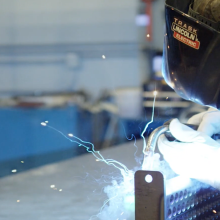Two takeaways on the economic impact of COVID-19

By Sean O'Neil
Director, Economic Research
Data provided by the Minnesota Chamber Foundation’s Center for Economic Research
As Minnesota’s businesses begin to emerge from the COVID-19 crisis, the Minnesota Chamber Foundation has been analyzing data about the economic impact of the seismic shifts of the last two months, including diminished demand and government interventions.
While the Chamber’s Grow Minnesota! Partnership has been talking with businesses throughout the state and during the COVID outbreak to better understand their needs, challenges and impacts, the Chamber Foundation has been assessing the early economic impact of COVID-19. Understanding preliminary data will help us understand how to position Minnesota for the best – and earliest – economic recovery possible.
Among the Foundation’s research are two early takeaways on the economic impact of COVID-19: Non-critical industries and economic impact vary by region in Minnesota.
When Governor Walz directed Minnesotans to stay home in the interest of public safety on March 25, his Executive Order 20-20 specified certain activities and businesses as “critical.” Public health and safety – nurses, fire fighters and the like – fell in this category, but many others did too. Nearly 80 percent of private sector workers are employed in critical industries, from grocery and hardware stores to delivery services. Aspects of many such businesses continued to operate.

Roughly one-fifth of Minnesota’s workforce fell into the “non-critical” category under that executive order. Traveler accommodation, amusement and recreation, employment services, and auto dealerships were among the largest industries in this category. Some, such as wood product manufacturing and transportation equipment manufacturing, were able to meet alternative criteria exempting them from closure. Many others, including much of retail, food service and tourism, could not.



